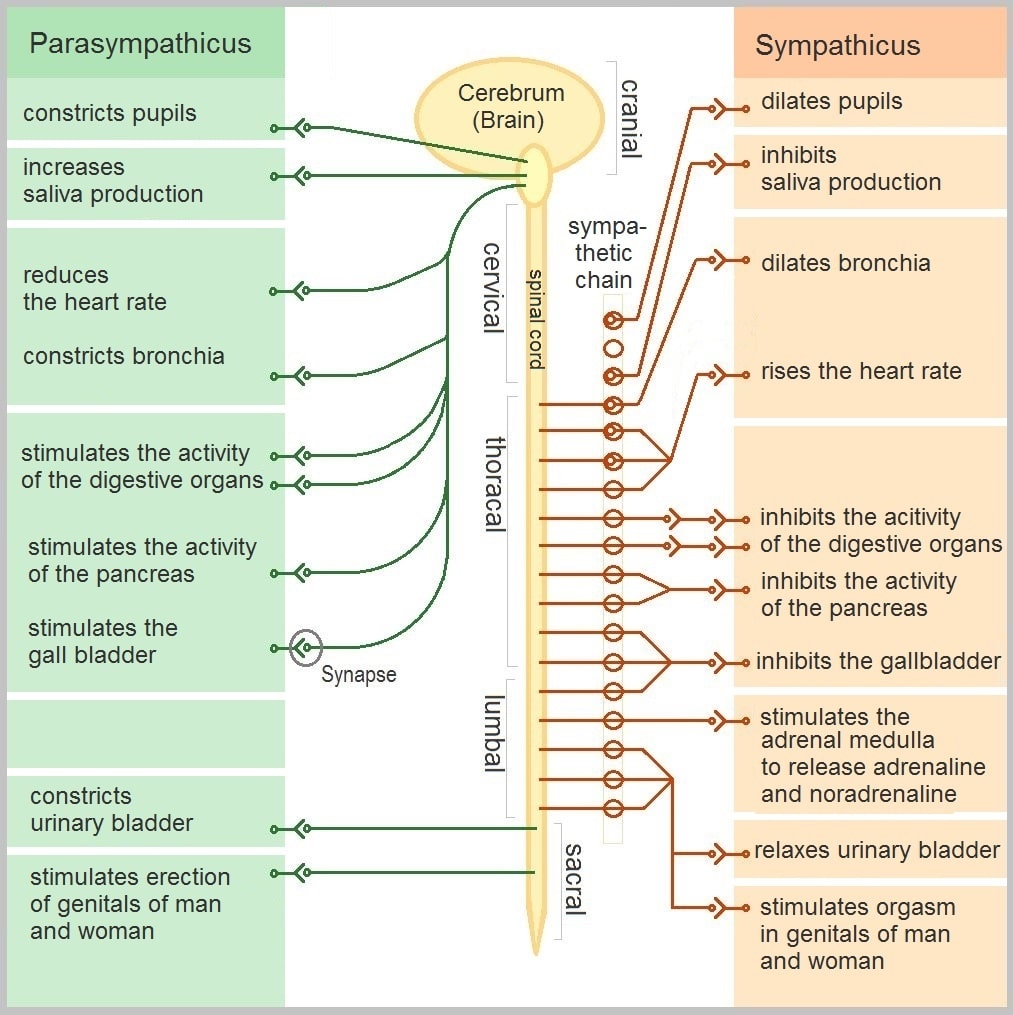- Biochemistry
- Histology
- Cardiovascular
- Respiratory
- Gastrointestinal
- Urinary
- Reproductive
- Neurology
- Endocrine
- Immunology/Haematology
Components
The nervous system is a collection of specialised cells that transmits signals between different parts of the body, regulating its function. It is comprised of two group of cells, glial cells and neurons. Neurons are responsible for sensing change and communicating with other neurons. Glial cells work to support, nourish, insulate neurons and remove waste products. We shall begin by considering the structure and function of these cell types.
Neurotransmitters are endogenous chemicals that enable communication within the nervous system and between the nervous system and the rest of the body. They relay information between individual neurons, and ultimately regulate a wide range of bodily functions. There are various classes of neurotransmitters, with different functions and mechanisms of action. Neurotransmitter levels and function are crucial to maintaining homeostasis, and if altered can lead to diseases.
Structurally the nervous system can be divided into two sections – the central and peripheral nervous systems (CNS and PNS). The CNS is comprised of the brain and spinal cord and controls our body’s voluntary (e.g. walking) and involuntary (e.g. breathing) functions. The brain is responsible for generating our thoughts as well as interpreting information from the PNS and responding appropriately. This process is made possible by tracts of nerve cells in the Spinal Cord which connect the brain to the PNS.
The peripheral nervous system is divided into two systems: the somatic nervous system and the autonomic nervous system. Each system contains afferent and efferent components. The autonomic nervous system can then be subdivided further into the sympathetic and parasympathetic nervous systems.
We shall then consider cerebrospinal fluid (CSF). CSF is a clear, watery fluid that surrounds the brain and the spinal cord. It is an ultra-filtrate of blood plasma and is contained within the subarachnoid space and the central canal of the spinal cord. It is responsible for protecting the CNS and helping to maintain homeostasis of the cells within it.





